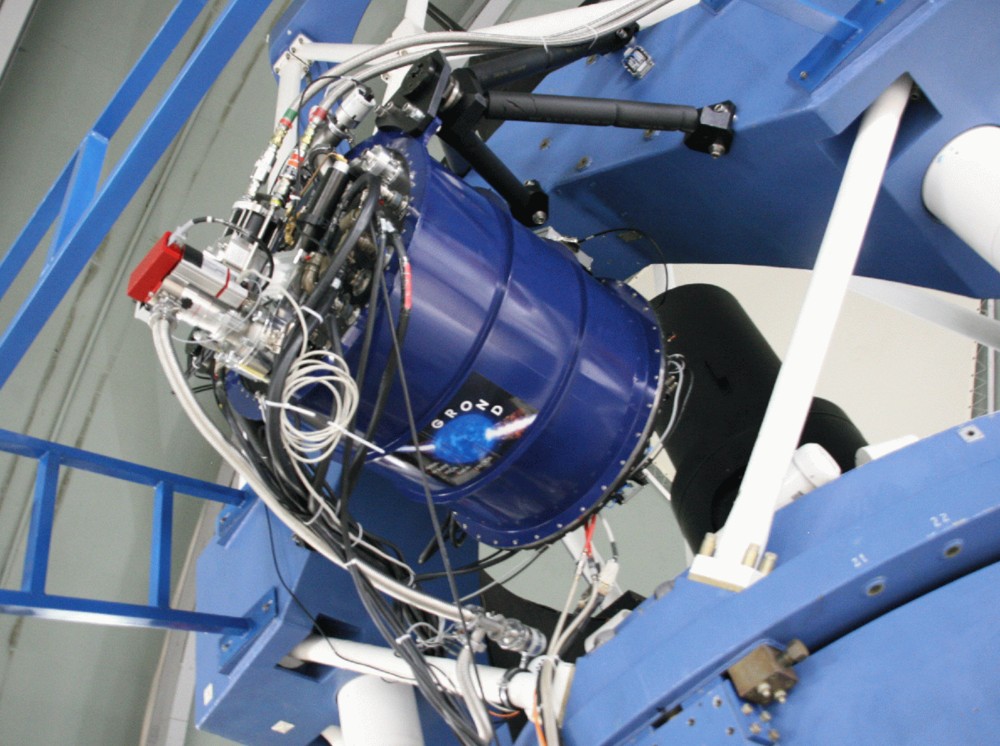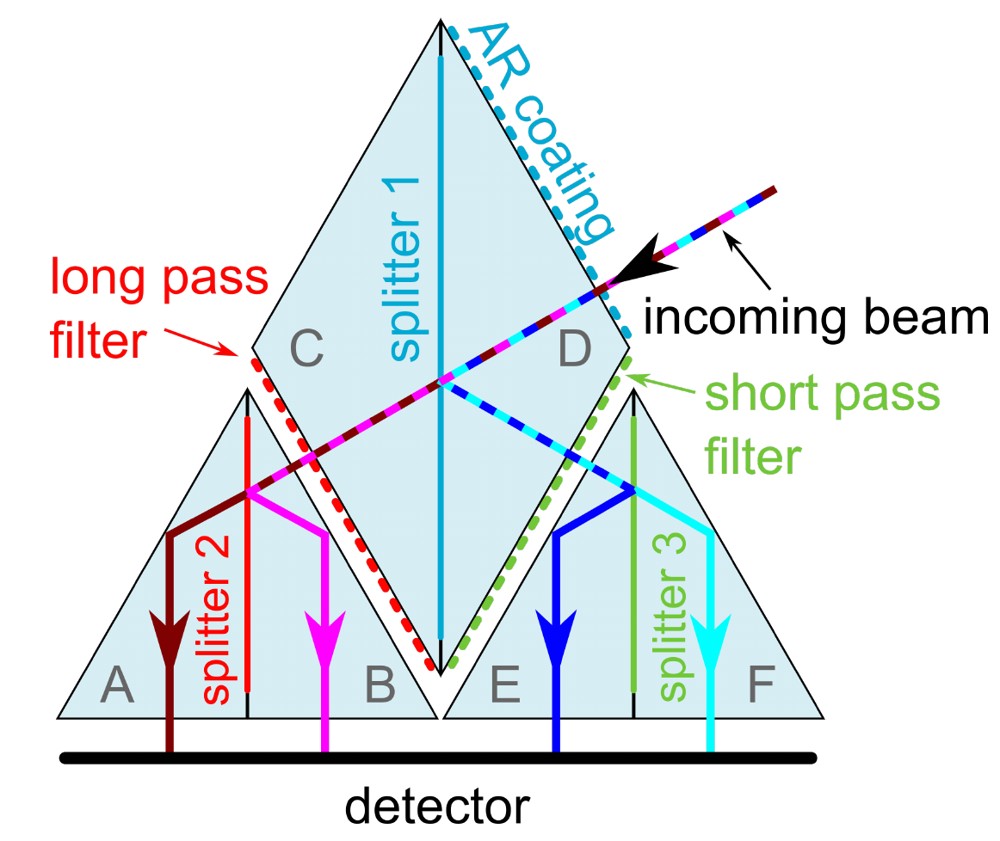Since decades observational astronomy uses broadband imaging with several filters to obtain information about the spectral energy distribution of cosmic objects. This energy distribution is an indicator of both the chemical composition of a celestial body as well as the physical processes on which the emitted radiation is based.
Modern large optical telescopes are expensive, often cost millions of euros, and require development and construction times of years. This calls for their economic operation. The classic approach to perform a broad-band imaging in several filters one after the other is economically not acceptable anymore. Optical beam splitters are an effective method to solve this problem. They split the incoming beam into several broad wavelength regions, which finally allows for a simultaneous imaging in several bands. The multi-channel imager GROND mounted at the 2.2 m telescope of the Max Planck Society on ESO/La Silla (Chile) was and is a pioneer in these technical developments (Fig. 1). It was constructed and built by the Max Planck Institute for extraterrestrial physics (MPE) Garching in tight cooperation with TLS in the years from 2000 to 2007.
The project Optics4Space wants to go even further. Funded by the Carl Zeiss Foundation, its aim is to build a novel compact beam splitter (Fig. 2). Included in a camera unit it shall be the scientific payload of a small satellite mission. Essential technological preparatory work was already done between 2018 and 2021 in the project SpaceOptics, a joint project between TLS and Fraunhofer IOF Jena, in close cooperation with MPE (1, 2). All three partners have came together again in Optics4Space.
What is the beam splitter supposed to do? The goal is its use for rapid follow-up observations of gamma-ray bursts in four photometric bands simultaneously, between around 800 and 2500 nm. Partly associated with gravitational wave events these bursts represent special stellar explosions in remote galaxies. They are a hot research topic in Astrophysics (3).
|
Fig. 1: GROND mounted at the 2.2-m telescope on ESO/La Silla (Copyright: MPE Garching) |
Fig. 2: Ray paths in the novel optical beam splitter (drawing by Fraunhofer IOF Jena) |



